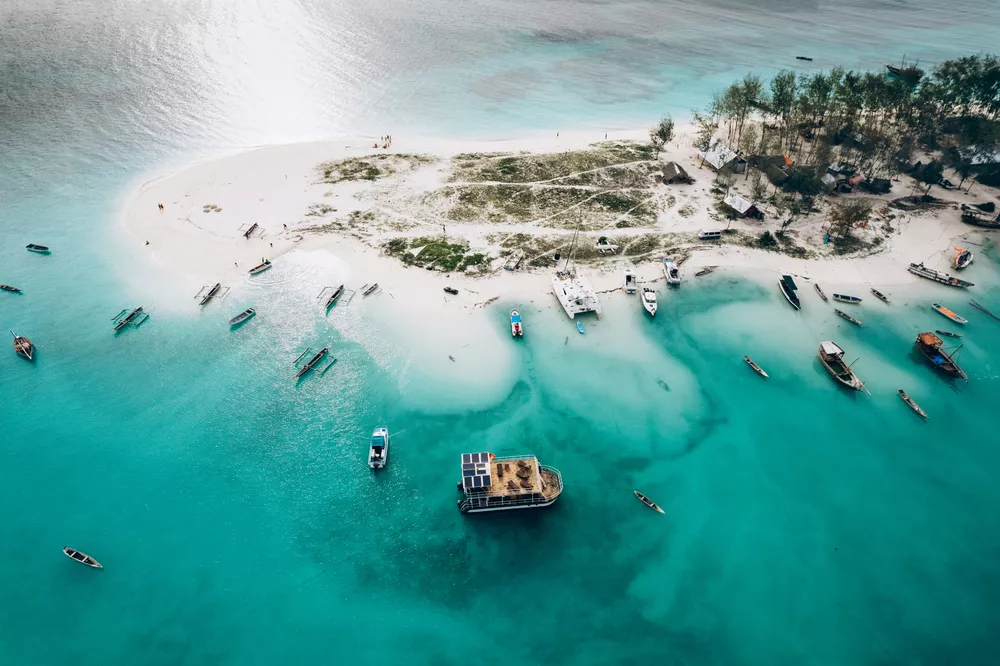Wanderlust: Marketing Strategies for the Age of Travel + Collection of Visuals [Free Files Included]
Distant horizons, exotic landscapes, and cultural experiences—this is wanderlust, a term that has found new meaning in the post-pandemic world. The concept goes beyond mere desire to travel, appealing to something more profound within the human soul.
As we approach World Tourism Day, let’s find out what role this deep-rooted longing for travel plays in the realm of marketing and how businesses can effectively leverage the philosophy behind wanderlust in their communication. Dive in for tips, insights, and a special collection of visuals that perfectly illustrates the wanderlust concept with free files included.
Browse Collection
What is wanderlust?
Wanderlust comes from the German words “wandern” (to hike) and “lust” (desire), but its meaning extends far beyond a simple love for long walks. It represents a desire to escape the mundane and explore unknown places. While it may manifest differently for each person, the core principles remain consistent across various cultures and individual experiences.
Today, wanderlust has become a cultural phenomenon, fueled by globalization, technological advancements, and social media. It’s celebrated in hashtags, Pinterest boards, and Instagram feeds filled with exotic locations. The travel industry, from airlines to tour operators, offers endless opportunities to satisfy the wanderlust within.
What is the philosophy behind wanderlust?
- A longing for discovery. Wanderlust often begins with a deep curiosity about the world. It taps into our desires to go beyond everyday experiences and step out of our comfort zones, venture into new realms—whether to an untouched mountain range or an ancient cityscape.
- Pursuit of freedom. There’s a liberating feeling in breaking free from daily routines, familiar environments, and societal norms. This freedom isn’t just physical; it’s also mental, offering a chance to rest from rush, stress, and the obligations of everyday life.
- Search for authenticity. Travel often exposes us to cultures, practices, and beliefs that are different from our own. This way, it encourages us to question what we know and who we are. This process of external discovery often stimulates internal self-reflection, allowing us to understand ourselves better.
- Holistic well-being. At its core, wanderlust is a philosophy that embraces the pursuit of holistic well-being. Travel often challenges us physically, emotionally, and mentally, testing our limits and pushing us to personal growth. The lessons we learn, the connections we make, and perspectives we gain contribute to our well-being.
- Transience and impermanence. Finally, wanderlust confronts us with the ephemeral nature of life. When we travel, we are constantly reminded that moments are fleeting, landscapes change, and people come and go. This awareness of the fact that everything is impermanent can lead to a deeper appreciation for the present moment. After all, it shows us that life is a journey to enjoy, not a destination to reach.
How can businesses integrate the concept of wanderlust into marketing communication?
1. Storytelling through visual content
Visual content plays a significant role in stimulating triggers behind wanderlust. High-quality images, engaging videos, and even immersive graphics can evoke feelings of wanderlust more effectively than words alone. Using visual content, businesses can find creative ways to tap into the concept of wanderlust to engage with their target audience and drive engagement. For instance, travel companies often use amazing landscapes or immersive local experiences in their marketing materials to trigger a desire for exploration and adventure.
Browse Collection2. Emotional branding
Consider adopting a storytelling approach that goes beyond just showcasing your products. Create narratives around emotional triggers that inspire travel—escapism, self-discovery, adventure, or novelty. Try thinking about how you can make one of your brand stories revolve around the concept of wanderlust. You can make a series of travel stories, customer testimonials, or even fictional narratives. This helps create an emotional connection with your consumers, making them more likely to engage with your brand on a deeper level.
3. Social media engagement
Brands that effectively use social media platforms can create and share content that taps into travel aspirations. User-generated content, hashtag campaigns, and interactive polls or quizzes will engage an audience that shares a love for travel. This creates a community around the brand, where people share the same values and have mutual desires.
4. Seasonal and event-based campaigns
Time your marketing campaigns around seasonal changes or significant events. These campaigns usually feature limited-time offers, travel packages, or special merchandise that appeal to those who have been bitten by the travel bug. Approach other brands, influencers, or bloggers to co-create content or offer something unique to your audience. This can enhance your brand visibility and help you find new audiences.
5. Interactive and personalized experiences
With advancements in technology, you can offer more interactive and personalized experiences to your customers. Explore AI-driven recommendation engines, VR-enabled virtual tours, and personalized suggestions—they’re just a few examples of how you can use tech to appeal to the wanderlust in consumers. But don’t forget about strategies that will interest your customers in coming back—for example, frequent-flyer miles, reward points for hotel stays, or special discounts for repeat bookings.
To wrap up
Wanderlust is a complex concept that combines emotional, psychological, and spiritual triggers that drive us to expand our horizons and enrich our lives through travel. By understanding the philosophy behind wanderlust and using the power of visual content, you can resonate with emotional triggers that your customers have and engage with them on a deeper level—not just for World Tourism Day, but for all seasonal occasions.
Browse Collection
Other articles you might find interesting
20 Things We Miss About Travel [Image Collection Included]
Featured Collection: On the Road
Featured Collection: American Road Trip
























